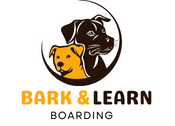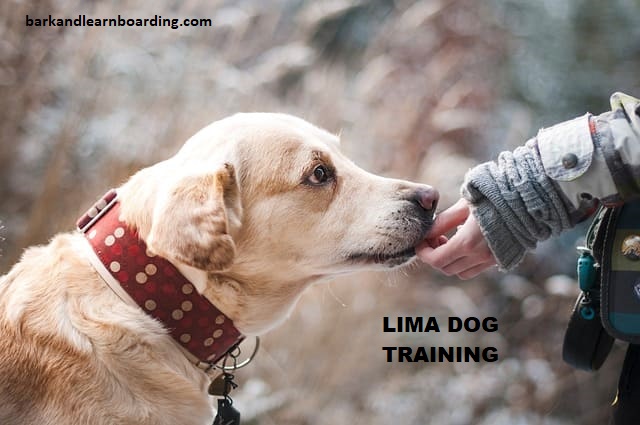LIMA dog training is a philosophy that has gained significant traction in the dog training world.
Understanding LIMA, both as a city and a philosophy, is essential for grasping the principles of dog training and unraveling the intricate human-canine hierarchy that thrives within its bounds.
This article explores LIMA dog training, delving into its core principles and the dynamics of human-dog relationships within the city.
Decoding LIMA:
LIMA embodies a multifaceted approach that emphasizes obedience, empathy, mutual respect, and understanding in the context of dog training. It stands for:
-
Learning:
Dog training in Lima is a continuous process of learning and adaptation. Dogs are encouraged to explore their environment, engage with new experiences, and develop the skills necessary to navigate the complexities of urban life.
-
Integration:
Integral to LIMA dog training is the concept of integration—integrating dogs into their human families, communities, and surroundings.
Dogs are not merely pets but active participants in daily life, enriching the fabric of society with their presence.
-
Mutual Respect:
Central to LIMA training is mutual respect between humans and dogs. Owners are encouraged to communicate with their canine companions in a language they understand, fostering a relationship built on trust, cooperation, and mutual understanding.
-
Adaptability:
In Lima’s ever-changing urban landscape, adaptability is critical. LIMA training emphasizes the importance of teaching dogs to adapt to various situations, stimuli, and environments, equipping your dogs with the skills needed to thrive in the hustle and bustle of city life.
Principles of LIMA Dog Training:
1. Least Intrusive:
The principle of most miniature intrusive training means using methods that have the most negligible impact on the dog’s physical and emotional well-being.
This involves avoiding techniques that cause fear, pain, or distress and opting for gentle, non-confrontational approaches.
The least intrusive training respects the dog’s autonomy and encourages voluntary cooperation rather than compliance through force or intimidation.
2. Minimally Aversive:
Minimally aversive training seeks to minimize using aversive stimuli, such as punishment or correction, in favor of positive reinforcement.
While consequences for undesirable behavior may still be necessary, they should be mild and proportional to the behavior, emphasizing teaching the dog what to do rather than punishing what not to do.
Minimally aversive training builds trust and fosters a positive relationship between the furry dog and the trainer.
3. Empathy and Understanding:
Central to LIMA dog training is empathy and understanding towards the dog’s perspective. Trainers strive to see the world through the dog’s eyes, considering factors such as breed, age, past experiences, and individual personality traits.
By empathizing with the dog’s emotions and motivations, trainers can organize their approach to meet the dog’s needs and create a supportive learning environment.
4. Focus on Positive Reinforcement:
Positive reinforcement, or rewarding desired behaviors with praise, treats, or other rewards, is a cornerstone of LIMA dog training.
By reinforcing behaviors that we want to see more of, rather than punishing unwanted behaviors, positive reinforcement motivates the dog to repeat those behaviors voluntarily.
Positive reinforcement strengthens the bond between humans and dogs and encourages a cooperative partnership based on trust and mutual respect.
Human-Canine Hierarchy in LIMA Dog Training:
In LIMA dog training, the hierarchy between humans and their canine companions is characterized by mutual respect, cooperation, and partnership rather than dominance or control.
While humans may assume leadership roles as teachers and guides, the relationship is one of collaboration rather than authoritarianism.
Critical aspects of the human-canine hierarchy in LIMA dog training include:
1. Leadership through Guidance:
Instead of asserting dominance over the dog, LIMA trainers lead by example, providing clear guidance and direction through consistent training techniques.
Leadership is based on trust, respect, and effective communication rather than coercion or force.
2. Shared Decision-Making:
In LIMA dog training, decision-making is a shared responsibility between humans and dogs.
Trainers encourage dogs to make choices and offer opportunities to problem-solve and learn through trial and error.
This collaborative approach empowers dogs to participate actively in their training and development.
3. Focus on Communication:
Effective communication is paramount in the human-canine hierarchy of LIMA dog training.
Trainers use clear, consistent cues and signals to convey their expectations to the dog while listening to and interpreting the dog’s body language and vocalizations.
By fostering open lines of communication, trainers can better understand the dog’s needs and motivations and respond appropriately.
4. Respect for Individuality:
LIMA dog training respects the individuality of each dog and acknowledges that not all dogs will respond to the same methods or techniques.
Trainers adapt their approach based on the dog’s personality, learning style, and specific needs, recognizing that what works for one dog may not work for another.
Human Hierarchy in Lima Dog Training:
Within Lima’s canine community, a distinct human hierarchy emerges, reflecting the roles and responsibilities of dog owners in shaping the behavior and well-being of their furry companions.
1. Leaders and Providers:
The leaders and providers are at the top of the hierarchy—the dog owners who assume responsibility for their pets’ care, training, and overall welfare.
These individuals set the tone for their dogs’ behavior through consistent leadership, positive reinforcement, and nurturing guidance.
2. Teachers and Mentors:
Dog trainers and behaviorists serve as teachers and mentors within Lima’s human hierarchy. They offer guidance, expertise, and support to dog owners seeking to enhance their training skills and deepen their bond with their pets.
They promote positive training techniques through private sessions, group classes, or online resources.
3. Family and Community:
Beyond individual ownership, Lima’s canine hierarchy extends to the broader family and community, where neighbors, friends, and fellow dog owners contribute to the socialization and well-being of dogs within their midst.
Through community and shared responsibility, Lima dog owners create an environment where dogs are valued members of society, respected, and cherished by all.
Conclusion:
LIMA dog training represents a paradigm shift in approaching our canine companions’ training and behavior modification.
Trainers create environments where dogs can thrive and reach their full potential by embracing the least intrusive, minimally aversive methods and fostering a cooperative human-canine hierarchy based on mutual respect and understanding.
It’s not about dominating or controlling the dog; it is about building a partnership built on trust, communication, and empathy.
FAQ’s
What is LIMA dog training?
LIMA dog training emphasizes Learning, Integration, Mutual Respect, and Adaptability, focusing on positive reinforcement and understanding between humans and dogs.
How does LIMA differ from traditional dog training methods?
LIMA prioritizes positive reinforcement and mutual respect over dominance-based approaches, fostering a cooperative partnership between humans and dogs.
What are the fundamental principles of LIMA dog training?
The fundamental principles include positive reinforcement, consistency, empathy, socialization, clear communication, and adaptability.
How can I apply LIMA principles to train my dog?
Apply positive reinforcement techniques, be consistent and patient, socialize your dog regularly, and communicate using verbal cues and body language.
What role does leadership play in this dog training?
Leadership involves providing guidance and structure calmly and consistently, earning respect and cooperation from your canine companion.
How important is socialization in this dog training?
Socialization is crucial for preventing fear and aggression, promoting confidence, and fostering positive interactions with other dogs and people.
What should I do if my dog exhibits unwanted behaviors during training?
Remain calm, redirect focus to desired behaviors using positive reinforcement, and avoid punishment or harsh corrections.
Where can I find resources for LIMA training?
Look for books, online courses, workshops, professional trainers, local dog training facilities, and community events specializing in positive reinforcement methods.

